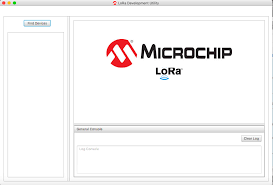LoStik is an affordable, easy to use, LoRaWAN™ compatible device. It lets IoT (Internet of Things) integrators, network testers, and hobbyists get connected to a LoRa® network faster, diagnose network issues more easily, and build new and exciting connected devices. LoStik is currently available to purchase on Crowd Supply.
Python examples require Python 3. Be sure to install the dependiencies in requirements.txt
pip install -r requirements.txt
miniterm.py is a light weight terminal emulator that works well with LoRa stick. The RN2903/R2483 radios require \r\n line ending and run at 57600 baud.
./miniterm.py --echo /dev/ttyUSB0 57600
blinky.py is for testing the user LEDs on the LoRa Stik. There is a red led tied to GPIO11 and a blue led tied to GPIO10.
./blinky.py -m blue -d 1 /dev/ttyUSB0
will blink the blue led once per second
./blinky.py -m both -d .5 /dev/ttyUSB0
will alternate the blue and red leds every .5 seconds.
radio_receiver.py and radio_sender.py are used for sending LoRa packets between two LoRa Stiks without the need for a LoRaWAN gateway. The included example sends a unix timestamp packet every 2 seconds and the receiver prints the incoming packets to stdout.
For detailed infomation about available commands checkout one of the following docs:
Microchip offers a programm called "Lora Dev Utility" that is part of the LoRa Development Suite
For platform specific notes see:
All software and example scripts are MIT licensed. For details see LICENSE
Hardware design and schematics are licenede under Creative Commons CC-BY-SA-NC For details see hardware/LICENSE.md
LoStik has two user LEDs that you can control via the UART interface on GPIO10 and GPIO11 and can be accessed using the following commands:
sys set pindig GPIO10 1 (turns on blue LED)
sys set pindig GPIO10 0 (turns off blue LED)
sys set pindig GPIO11 1 (turns on red LED)
sys set pindig GPIO11 0 (turns off red LED)
LoRa® and LoRaWAN™ are trademarks of Semtech Corporation or its subsidiaries.
